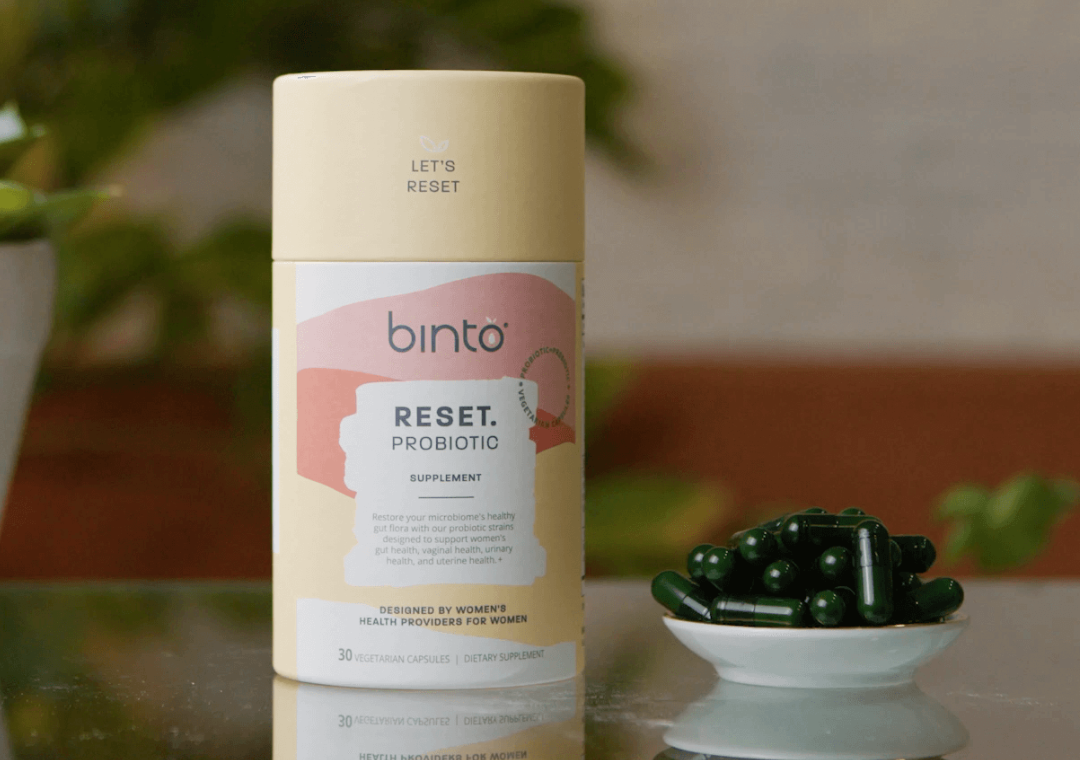When we hear about probiotics, most of us immediately think about gut health. While probiotics are definitely beneficial for your digestive system, there's so much more to them! These little wonders, packed with good bacteria, can be super useful for promoting healthy vaginal flora. According to a 2017 study published in the International Journal of Immunopathology and Pharmacology, a Lactobacilli combination is a promising way to prevent vaginal infections (1).
Oral probiotics & bacterial infections
Like the gut, the vagina contains various microbes, Lactobacilli being the most common healthy bacteria. It's very easy to upset the balance from sexual activity, scented soaps, or even feminine hygiene products that have dyes or bleaches (try BINTO's organic cotton period products!).
Researchers observed the impact of Lactobacillus rhamnosus and Lactobacillus acidophilus on four different bacteria responsible for aerobic vaginitis (AV) and bacterial vaginosis (BV). When treated with antibiotics, the recurrence rate of these infections remain high. Plus- antibiotics do not restore the healthy Lactobacilli. The combination of the two probiotic strains reportedly inhibit the bad bacteria responsible for AV and BV. Together, they also can be helpful in treating vaginal E. coli (1).
The coolest part? This study also showed the potential for these two good bacteria in forming a barrier against bacterial infections such as AV and BV (1).
Oral probiotics & fungal infections
A 2016 research study published in the journal Clinical Infectious Diseases states:
"Clinical studies indicate that probiotics may reduce Candida colonization on human mucosal surface, relieve signs and symptoms of fungal infection, and enhance the anti fungal effect of conventional therapy" (2). In short- probiotics have a lot of potential for helping with vaginal yeast infections, especially when taken along with an antifungal treatment. What strains are we looking at specifically? Lactobacillus rhamnosus and Lactobacillus paracasei, though they may have greater potential when formulated to be administered vaginally (3).
What Your Probiotics Should Contain
Not all probiotics are created equally. Oral probiotics should contain Lactobacilli, as well as bifidobacterium, in order to benefit your microbiome BINTO probiotics contain all of the previously stated strains of good bacteria, along with others specifically used for gut and skin health (they're also shelf-stable!)
A Note on Prebiotics:
Prebiotics are non-digestible carbohydrates that act as food for probiotics. A probiotic is virtually ineffective if it doesn't have a prebiotic included.
Resources:
- http://journals.sagepub.com/doi/full/10.1177/0394632017697987#
- https://academic.oup.com/cid/article/62/9/1143/1745140
- https://onlinelibrary.wiley.com/doi/full/10.1111/jam.12459

